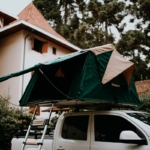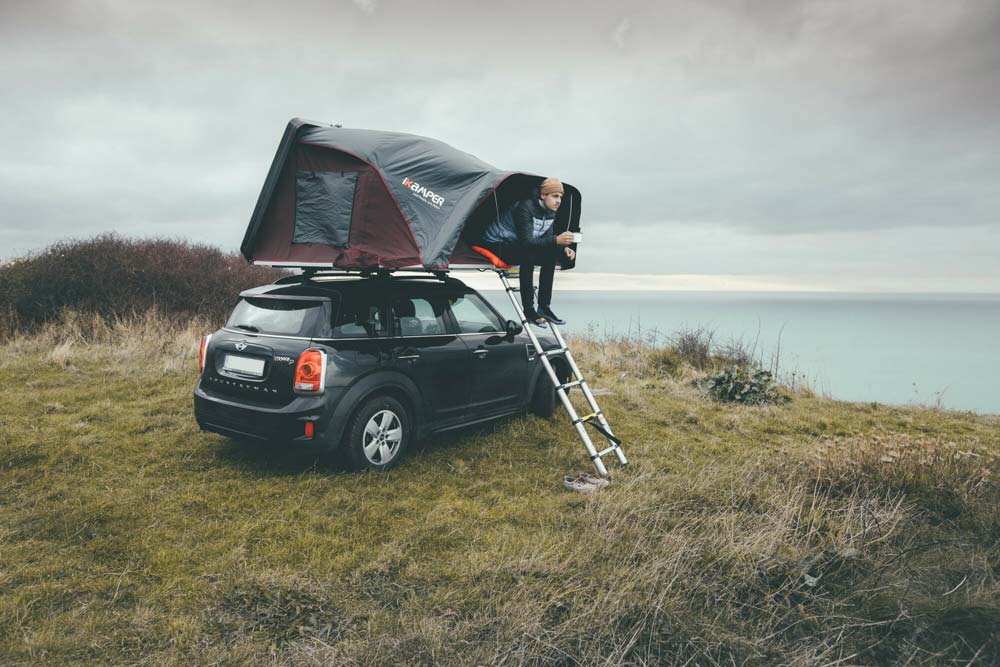Impregnation & Care – Proper impregnation, care & protection for your tent
Camping in a tent is incredibly calming – it means listening to the crickets for a long time in the evening and being woken up in the morning by the chirping of birds. Whoever spends hundreds of Euros on a new tent now, naturally wants to be able to use it for many years to come. To prevent the condition of the tent from deteriorating, you should make sure that it is cleaned and re-impregnated regularly.#
Impregnate – with liquid impregnator or impregnation spray
Is your tent and awning already impregnated? Especially before a longer trip it is important to impregnate the tent or renew the impregnation, because sunlight, weather, heavy rain and abrasion make an impregnation useless over time. It is therefore recommended to reimpregnate the tent every few years to avoid having to sleep in a damp sleeping bag when travelling.
Impregnation does not make your tent waterproof!
By the way: Impregnation does not make a tent waterproof. It protects the fabric from getting soaked up with water. If your tent has seams that are permeable to water, impregnation will not save you. A waterproof tent always consists of an outer fabric with a waterproof coating and waterproof seams.
Liquid impregnator, impregnation language, household remedies – what helps?
There are different types of waterproofing options, such as liquid waterproofer, waterproofing spray and there are also a few good home remedies. If you use a spay, you should make sure that the tent is clean and completely closed before spraying it.
You should definitely do the spraying outside and please make sure that nothing of the product is inhaled. With a liquid impregnator, it is either possible to rub the tent with a sponge or brush, or to immerse the tent completely in the liquid in a bathtub or plastic tub. The liquid must be diluted with water, please refer to the package insert and make sure that you have as little contact with the liquid as possible.
After impregnation
With the spray and also with the liquid the tent must dry completely afterwards, if necessary the process can be repeated a second time. If you have to deal with leaking seams, you should try a liquid seam sealer. This is usually applied to the seams with a brush and ensures that it does not rain pure.
This is how you impregnate your tent properly:
- Pitching up the tent – To make sure you don’t forget a single spot, it makes sense to pitch up the tent.
- Apply the impregnating agent – No area should be overlooked during application.
- Work in impregnation agent with a brush – With a brush you can work the impregnation agent correctly into the fabric.
- Leave to take effect – The exact duration of the effect is stated in the package leaflet.
- Rinse – All residues of the impregnating agent should be washed off.
- Let it dry – Before packing the tent away, it must be completely dry.

Household remedy – acetic alumina & candle wax
The most effective household remedy for impregnation is acetic clay. You don’t need to pitch your tent for impregnation with acetic clay, you only need to bathe it in a plastic tub or your bathtub with the household remedy. After that you just need to hang up your tent and let it dry. You can get acetic alumina practically everywhere, you can buy it in your drugstore or order it on the internet. Attention – you should keep your hands off candle wax as an impregnating agent for seams. A tent is usually really expensive and you shouldn’t ruin it with a little do-it-yourself experiment.
- Candle wax – ruins the tent!
- Acetic alumina – works!
Care – Tips for cleaning and protection
You should also remember to clean and maintain your tent regularly. Never wash your tent in the washing machine or with a high-pressure cleaner! You might get the dirt out, but it will quickly damage your tent. Dry dirt like dust or sand can be shaken out easily, more stubborn dirt can be removed with a detergent. To do this, you must dilute the detergent with water as indicated on the package and then remove the dirt with a sponge or brush.
Wash your tent before drying and make sure that there are no more detergent residues on the tent. By the way, you can clean the zipper from dirt and sand with a toothbrush and protect it from wear and tear.
- Remove dirt
- Clean the tent regularly
- protect zipper from wear and tear
Structure and stay: ground, sunlight and shoes
When setting up the tent, make sure that there are no sharp stones or fir cones under the tent. These can make a hole in the floor of the tent. A tent base can be practical, as it protects the tent floor from damage. Avoid direct sunlight. At best, the tent should be in the shade and protected from the sun, as this can quickly cause the delicate tent fabric to become brittle. Different materials are naturally more sensitive than others. If a storm is imminent, you should definitely think about guy ropes. The lines should be pulled tight and re-tensioned when it rains, as many fabrics expand when damp.
Shoes should always be left outside or in the awning. These bring small stones into the tent, which can quickly drill fine holes in the tent floor.
Dismantling: fold up, pack up and moisture
When dismantling it makes sense to turn the tent inside out and shake it out. This way you can be sure that no pine needles or stones can damage the tent. Before packing up, you should also make sure that your tent is dry. Even if it hasn’t rained, it is most likely that some condensation has collected during the night or that the ground on which it stood has released some moisture. It is therefore best to hang the tent over a branch and wait until it is completely dry.
Storage and repair
At home the Zet should be stored well to protect it from moisture, heat and curious rodents. You should also make sure that the tent is 100% dry before you finally put it away. Otherwise it will quickly start to get mouldy! Make sure you use the right cleaning agents and be gentle on the delicate tent fabric. Stick to the package insert to avoid damaging the fabric.
Repair small tears and holes, reseal the seams and test the waterproofness with a watering can at home so that you don’t literally stand in the rain in nature. Nobody likes cold feet!
Protection and care: 9 tips
Here once again summarized, the 9 tips for your tent protection and care:
- Watch out for stones and pegs on the ground, when erecting a tent
- Avoid solar radiation (heat generation)
- guy lines for a firm hold in wind and storm
- Leave your shoes in the awning
- Shake out the tent well when taking it down
- Leave to dry properly before packing
- Store the tent correctly (no moisture, heat or curious rodents)
- Correct cleaning agents (observe package insert)
- Repair small cracks and holes at home









